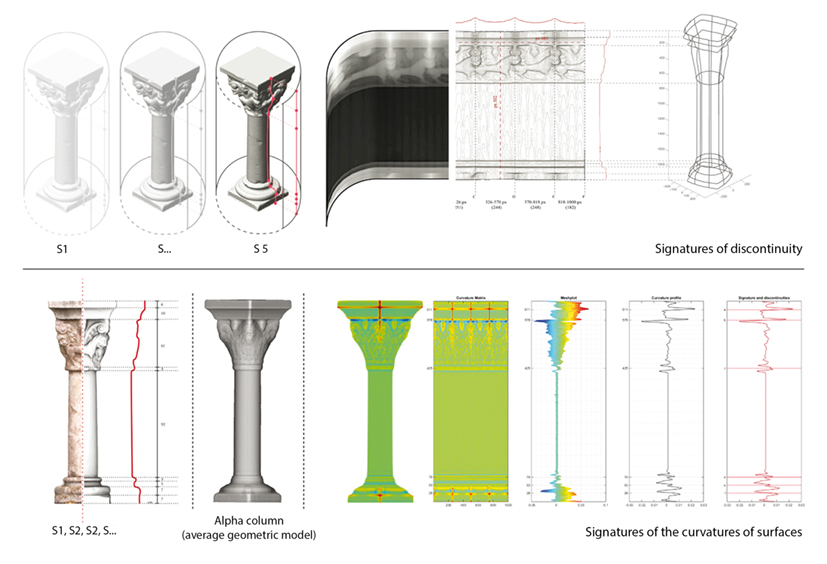
Towards a multi-scale semantic characterization of the built heritage: From the column to the urban scale.
Abstract
A survey, defined as a succession of stages ranging from acquisition to representation, has historically an ambition of analysis, understanding, and knowledge representation of architectural artefacts. However, there is a paradox. While for many years this discipline has seen a development in digitization methods and techniques, the purpose of the survey seems to mainly focus on the metric representations of building, and on the production of beautiful (or figurative) images. Acquisitions by lasergrammetry or photogrammetry bring in a quantity of data that are qualified as massive, but appears to be too often underlooked. The present paper attempts to consider work acquisition beyond the ambition of the acquisition of measurements, which investigates new methodological approaches for the characterization of architectural shapes according to different scales of observation. To understand whether the data resulting from the acquisition work can assist "beyond the visible" in the study and analysis of built heritage, this paper addresses three methodological avenues, which relates to the morphological / semantic characterization of architectural objects according to different nature and scale, to consider new methods of analysis by using further massive data.
DOI: https://doi.org/10.20365/disegnarecon.26.2021.3
Keywords
Full Text:
PDFRefbacks
- There are currently no refbacks.
Copyright (c) 2021 David Lo Buglio; Alexandre Van Dongen
DISEGNARECON
ISSN 1828 5961
Registration at L'Aquila Law Court no 3/15 on 29th June, 2015.
Indexed in SCOPUS. Diamond Open Access. All papers are subjected to double blind peer review process by qualified reviewers.
Journal founded by Roberto Mingucci
